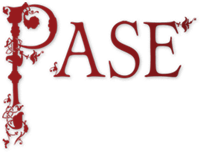Table of Contents
Top of page
Name
Summary
Distribution Map
Property List
Profile
Bibliography
Bottom of page
Leofcild 10
Leofcild free peasant at Whatfield (Suff.), fl. 1086
Male
CPL
4 of 5
Summary
Leofcild (Lefcild) was a free peasant with ½ acre on the abbot of Bury St Edmunds’ manor of Huntefelde (Whatfield) in 1086.Profile
Leofcild (Lefcild) was a free peasant with ½ acre on the abbot of Bury St Edmunds’ manor of Huntefelde in 1086 (FBB: 43). The place-name does not occur elsewhere in the Feudal Book and seems not otherwise to have been solved. It can, however, be plausibly identified with Whatfield, on the basis of matching up the abbey’s Feudal Book properties in the half-hundred of Cosford with its DB manors in the same.Whatfield lies a little over 15 miles SE of the abbey, about half-way between Sudbury and Ipswich. DB has the abbey owning two manors there, called Whatfield (Watefelda: Suff. 14:111) and the other Whatfield (alia Watefelda: Suff. 14:112). The first had 18 free men with 2½ carucates TRE; the second 10 free men with an unspecified share of 1½ carucates (a shade under 1 carucate if the land was divided proportionately between these 10 men and the 6 free men at Aldham who were included in the valuation). Altogether the two Whatfields of DB had 28 free men with around 3½ carucates (420 acres) TRE, whereas in the Feudal Book Huntefelde had 24 free holdings of 297½ acres in 1086. The discrepancy is about the same order of magnitude as that commonly found when the DB and Feudal Book data for a Bury manor can be compared directly.
The final place-name element of both Whatfield and Huntefelde is OE feld (‘open land’). Whatfield has as its first element OE hwæte (‘wheat’) and Huntefelde has OE hunta (‘huntsman’) or the personal name Hunta. There is no evidence that there really were two Whatfields, and perhaps one of them was actually called Huntefelde, with the official geld records compiled for the shire using one name, and the abbey’s own administrators the other.
The identification of Huntefelde as Whatfield is supported by the fact that one of the tenants at Huntefelde in the Feudal Book was Oslac de Haldham, whose topographical byname was Aldham, the place linked in DB with ‘the other Whatfield’, which it indeed adjoined.
Bibliography
FBB: ‘The Feudal Book of Baldwin, abbot of Bury St. Edmunds, 1065–1098, contained in the Black Book of the abbey, MS. Mm. iv. 19, fols. 124–43b. (Cambridge University Library)’, in Feudal Documents from the Abbey of Bury St. Edmunds, ed. D. C. Douglas, British Academy Records of the Social and Economic History of England and Wales, 8 (London: Oxford University Press for the British Academy, 1932), 1–44
